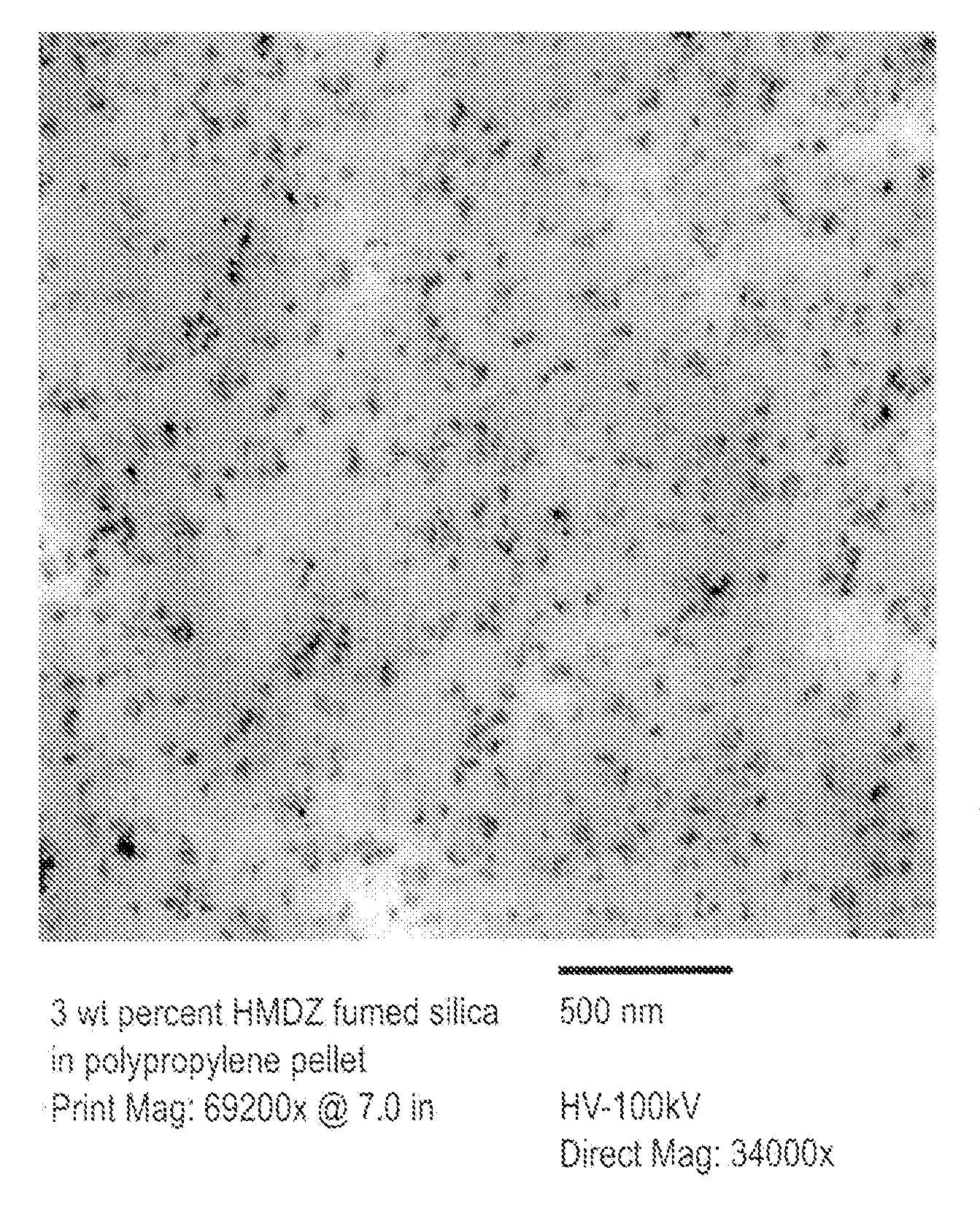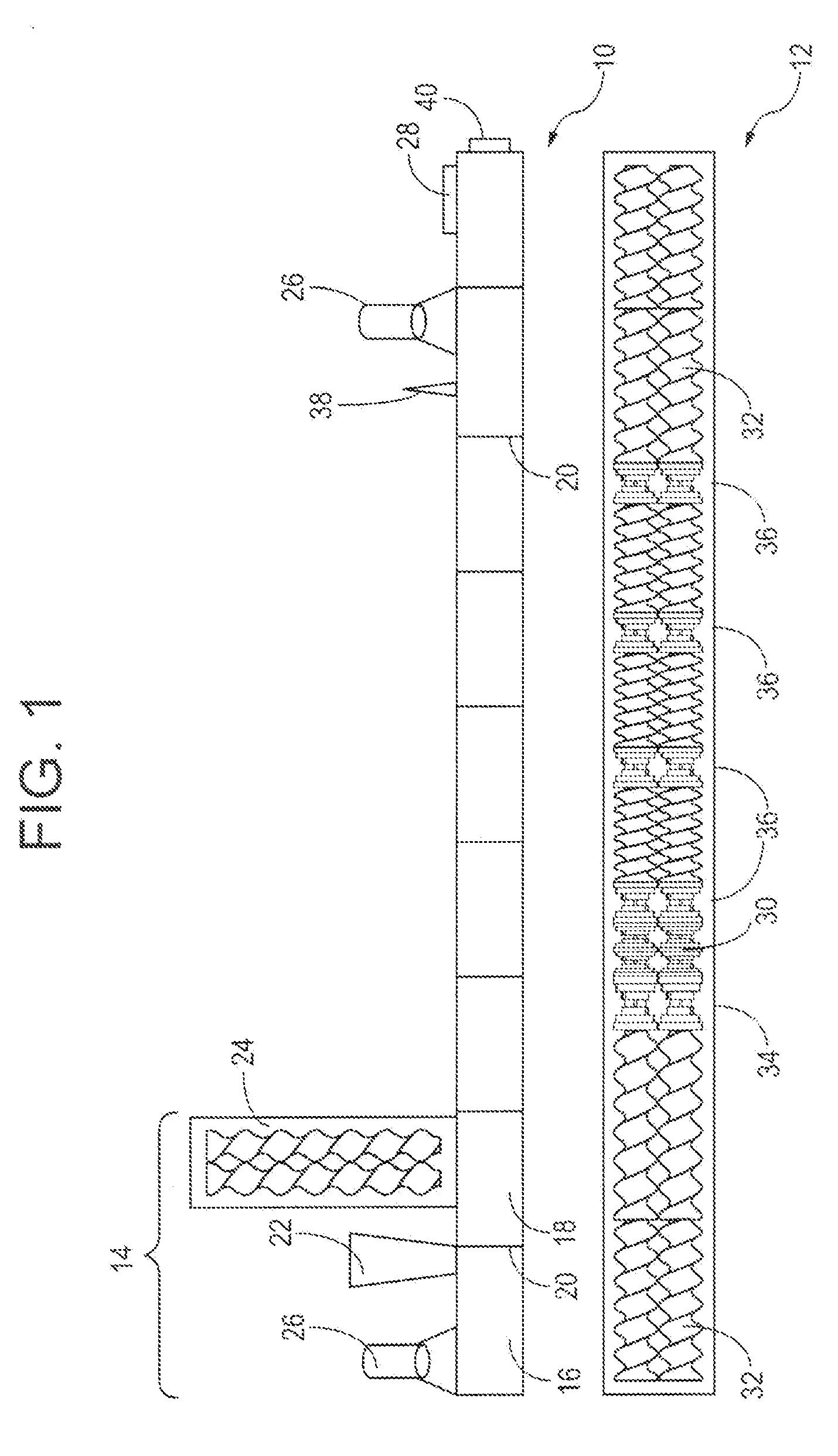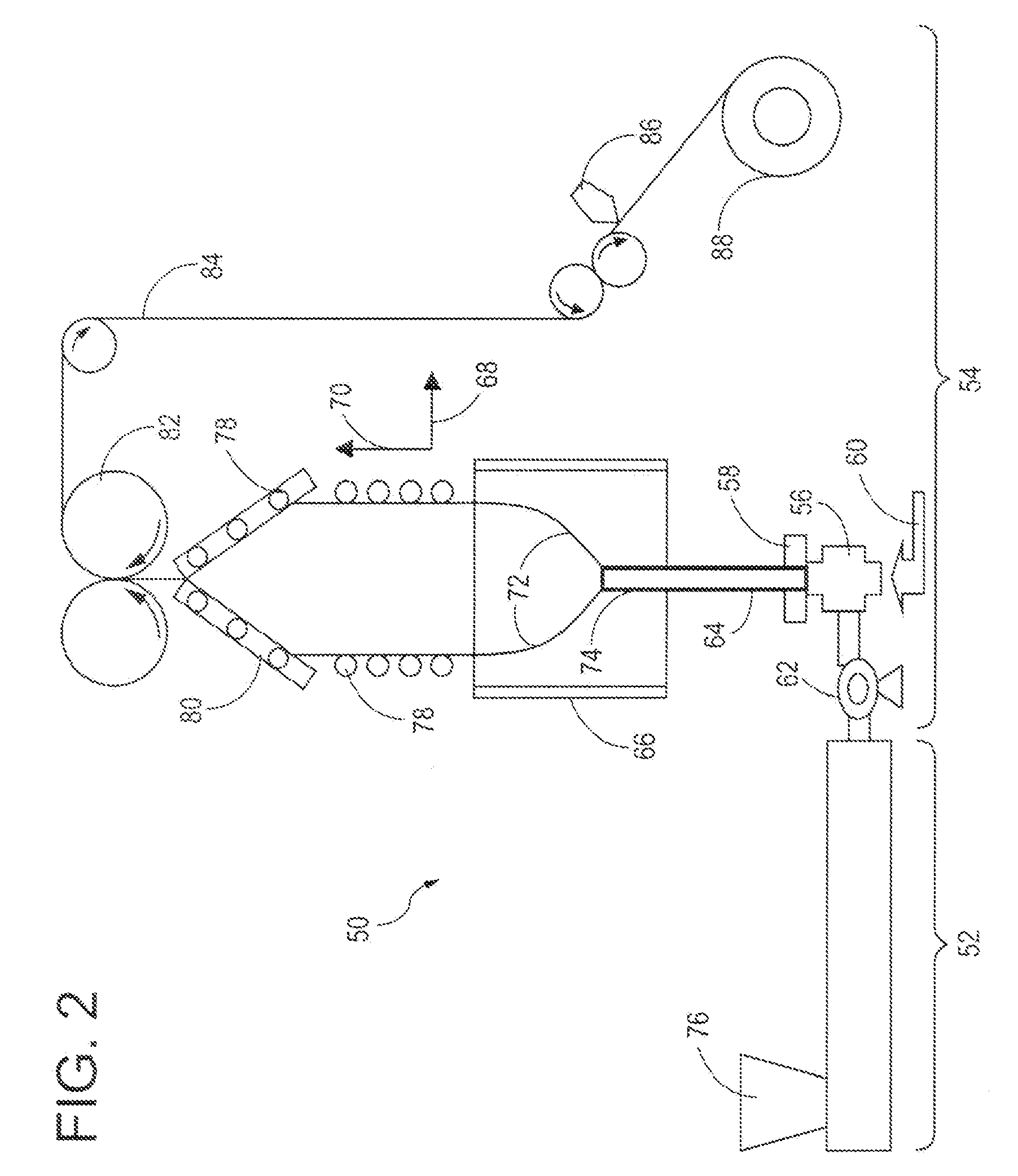Biaxially Oriented Nanocomposite Film, Method of Manufacture, and Articles Thereof
a nanocomposite film and biaxial orientation technology, applied in the field of biaxial orientation nanocomposite film, methods of manufacture, can solve the problems of non-uniform distribution of filler, biaxial oriented composite film materials prepared by blown film methods from becoming commercially available in the market, and challenging biaxial stretching of composite polymeric materials into relatively thin films
- Summary
- Abstract
- Description
- Claims
- Application Information
AI Technical Summary
Benefits of technology
Problems solved by technology
Method used
Image
Examples
examples
[0076]The following process was designed specifically for the incorporation of nano-fillers into thermoplastics (metering of components, melting of the polymer, dispersion of the filler into the melt). The extruder screw configuration maximizes mixing, minimizes viscous dissipation (low melt T, short residence time). It has been observed that under conditions of high melt temperature, high screw speeds, and long residence times, the molecular weight of polypropylene (PP) degrades rendering its viscosity too low for blown film applications. Polypropylene (PP), in the form of pellets, and nano-filler, a powder, were not pre-mixed, but added separately. PP and nano-filler were added to a twin-screw side feeder using two separate loss-in-weight feeders. PP and nano-filler were not dried prior to compounding (were used as received). The extruder barrel temperature was set at about 180-190° C. Two levels of filler were used: 3 and 6 weight percent (wt. % or wt %). Nano-fillers: Cabosil TS...
example c-1
to C-3 (09212006-1 to -3), Ex-1 and Ex-2 (09212006-4 to -5). Extrusion only experiment.
[0079]C-1 was a control sample of polypropylene used as received, run through the extruder.
[0080]In examples C-2, C-3, and Ex-1, polypropylene pellets and silica powder or alumina powder were fed into the side feeder separately using two loss-in-weight feeders at barrel two. A second atmospheric vent was located in barrel one.
[0081]In Ex-2 the polypropylene pellets were fed into barrel one and the nano-filler (silica) was fed into the side feeder at extruder barrel two. Otherwise, silica flowed out of the vent in barrel one when fed with polypropylene into the side feeder. One atmospheric vent was used at barrel eight.
[0082]The extruder conditions for C-1 to C-3 (09212006-1 to -3) and Ex-1 to Ex-2 (09212006-4 to -5) are listed in Tables 2A and 2B.
TABLE 2APolymerFillerDie MeltScrewDieFeed RateFeed RateTorqueTempSpeedPressureCondition #(kg / hr)(kg / hr)(%)(° C.)(rpm)(MPa)C-109212006-1220602125000.91C-2...
example ex-3 to ex-4.90.7
Example Ex-3 to Ex-4. 90.7 kg (200 pound) scale-up of Ex-1 and Ex-2. First and second extruders.
[0087]Polypropylene was added to barrel one and nano-filler was added to the extruder barrel two of a first extruder using two loss-in-weight feeders. One vent was used in barrel eight. The polypropylene was BORCLEAN from Borealis. The nano-filler was Cabosil TS530 HMDZ-treated fumed silica. The extruder ran for 4-6 hours with no interruption. Two levels of nano-filler were used: 3 and 6 wt % (weight percent) based on total weight of the nanocomposite. Six samples were taken from each one of the 90.7 kg (200 lb.) batches prepared using each silica level. The extruder settings for the 3 AVt % nanocomposite are shown in Table 4.
TABLE 4Ex-3. 3% silica, extruder conditions (six samples taken for one 200 lb batch)PolymerFillerDie MeltScrewDieActual BarrelFeed RateFeed RateTorqueTempSpeedpressureTemperaturesCondition #(kg / hr)(kg / hr)(%)(° C.)(rpm)(MPa)(° C.)10122006-122.10.72582155061.09150 / 189 / ...
PUM
| Property | Measurement | Unit |
|---|---|---|
| size | aaaaa | aaaaa |
| size | aaaaa | aaaaa |
| energy density | aaaaa | aaaaa |
Abstract
Description
Claims
Application Information
 Login to View More
Login to View More - R&D
- Intellectual Property
- Life Sciences
- Materials
- Tech Scout
- Unparalleled Data Quality
- Higher Quality Content
- 60% Fewer Hallucinations
Browse by: Latest US Patents, China's latest patents, Technical Efficacy Thesaurus, Application Domain, Technology Topic, Popular Technical Reports.
© 2025 PatSnap. All rights reserved.Legal|Privacy policy|Modern Slavery Act Transparency Statement|Sitemap|About US| Contact US: help@patsnap.com



